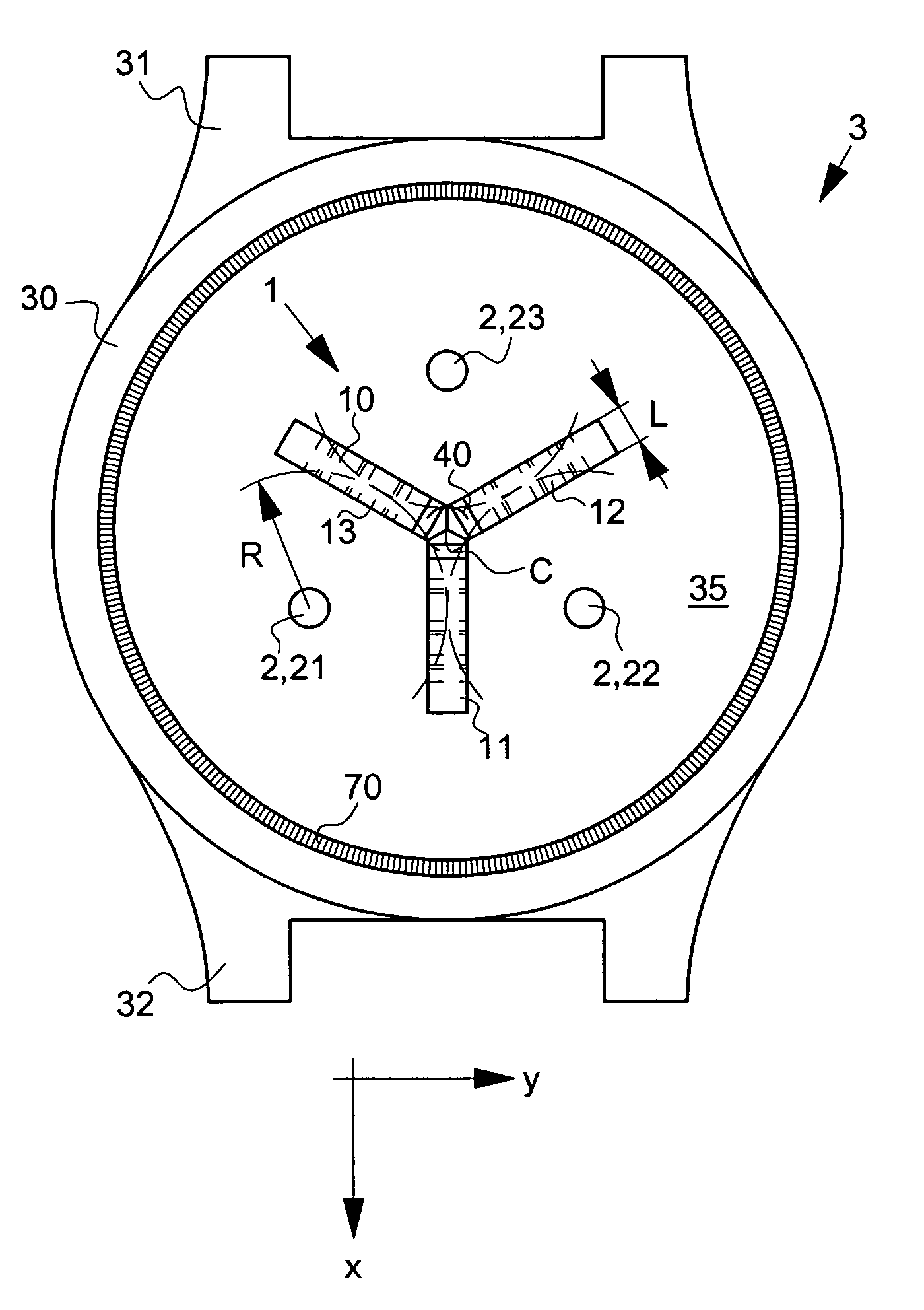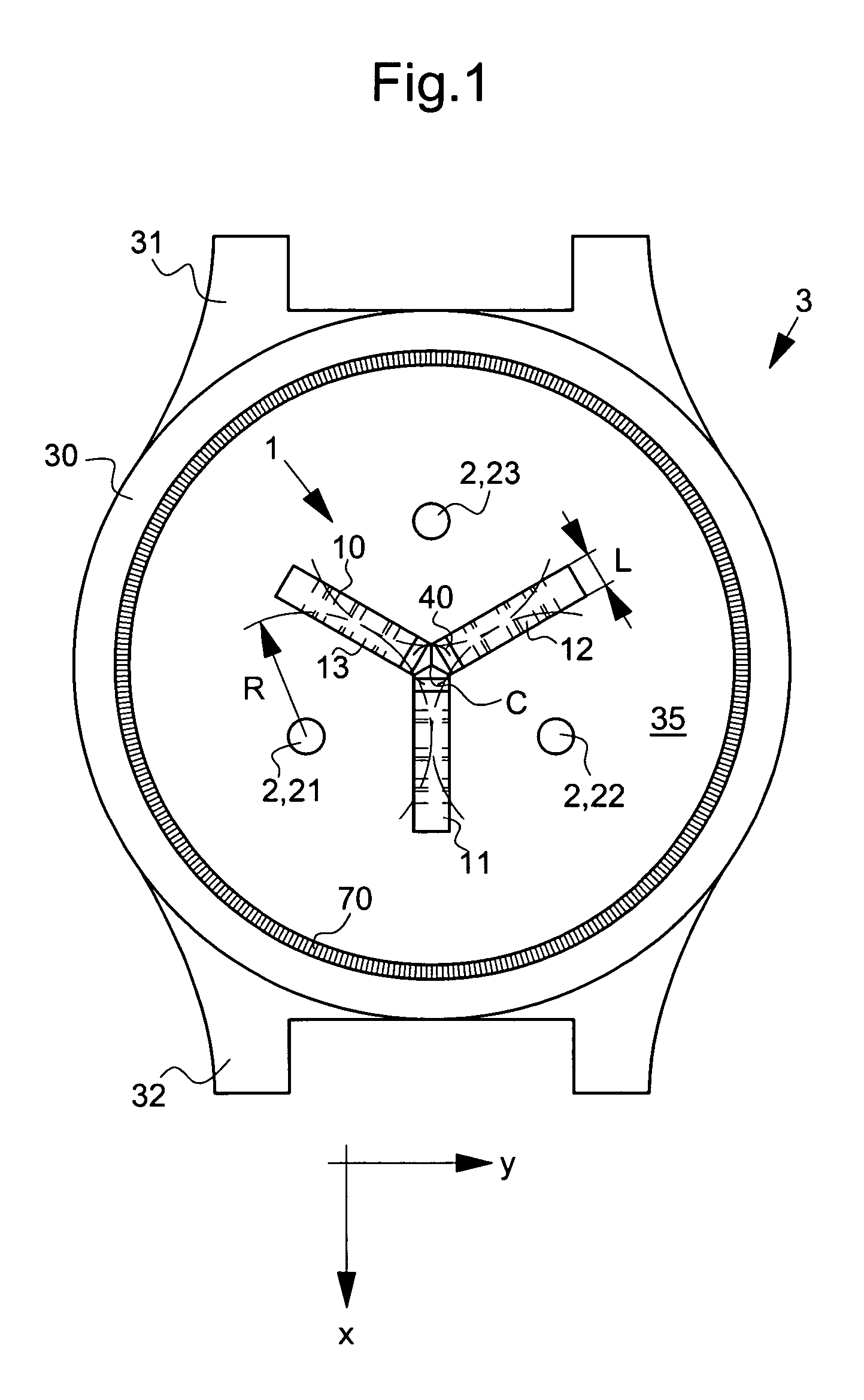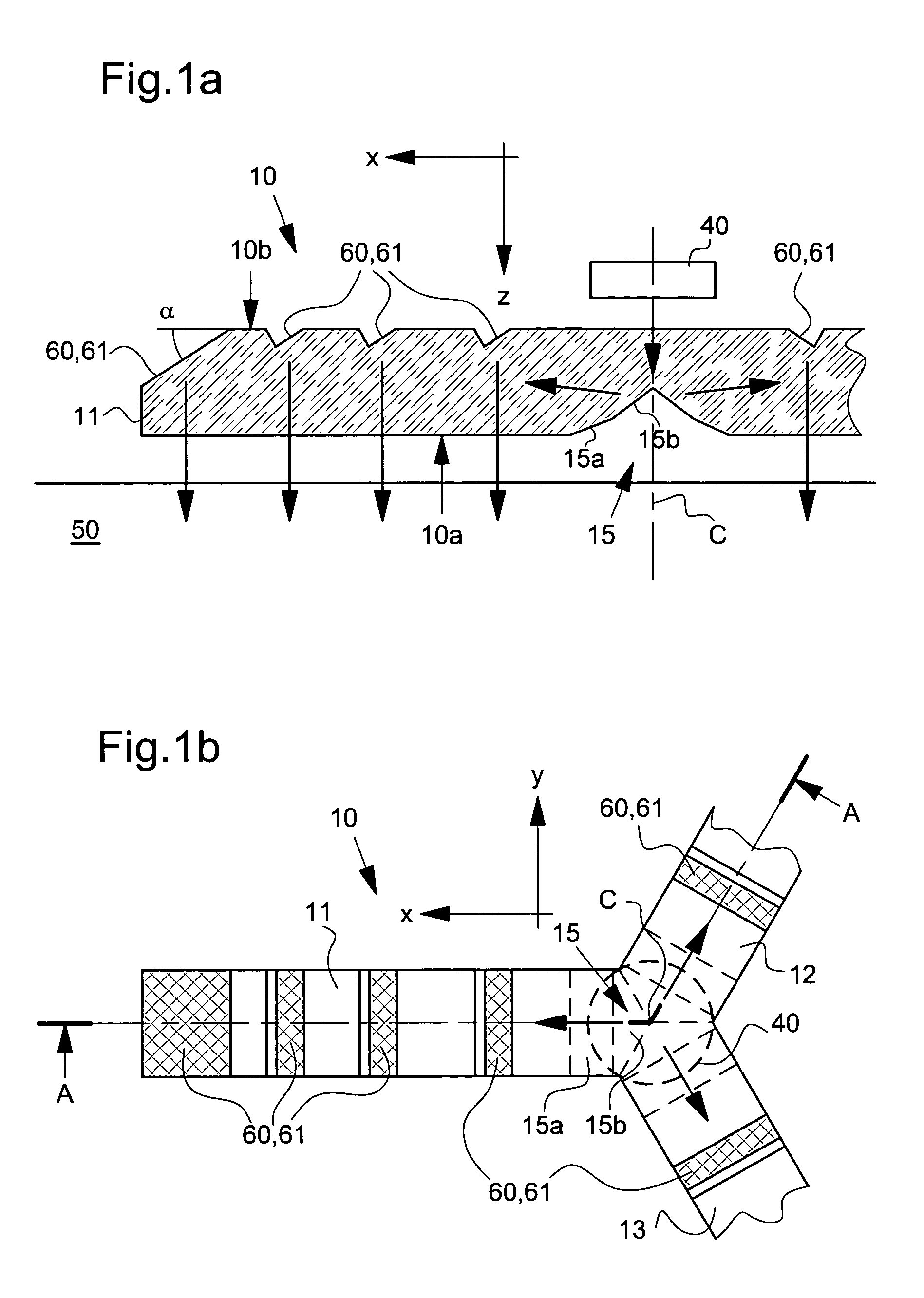Portable instrument for measuring a physiological quantity, including a device for illuminating the surface of an organic tissue
- Summary
- Abstract
- Description
- Claims
- Application Information
AI Technical Summary
Benefits of technology
Problems solved by technology
Method used
Image
Examples
Embodiment Construction
[0037]The various embodiments that will now be presented are given purely by way of illustrative and non-limiting example. In particular, it should again be stressed that the embodiments that will be presented can advantageously but not uniquely be implemented in an instrument intended to be worn on the wrist. Other portable applications of these solutions may perfectly well be envisaged.
[0038]In the embodiments illustrated in the Figures, it will be noted that a common point lies in the use of an illumination device including at least one light source coupled to a structured optical element forming a guide, this guide being structured in a determined manner as a function of geometry (in particular its periphery) and the arrangement of the detection device. As will be seen hereinafter, the detection device can also be provided with at least one optical element forming a guide coupled to at least one photoreceptor. By way of alternative, one could envisage, within the scope of the in...
PUM
 Login to View More
Login to View More Abstract
Description
Claims
Application Information
 Login to View More
Login to View More - R&D
- Intellectual Property
- Life Sciences
- Materials
- Tech Scout
- Unparalleled Data Quality
- Higher Quality Content
- 60% Fewer Hallucinations
Browse by: Latest US Patents, China's latest patents, Technical Efficacy Thesaurus, Application Domain, Technology Topic, Popular Technical Reports.
© 2025 PatSnap. All rights reserved.Legal|Privacy policy|Modern Slavery Act Transparency Statement|Sitemap|About US| Contact US: help@patsnap.com



